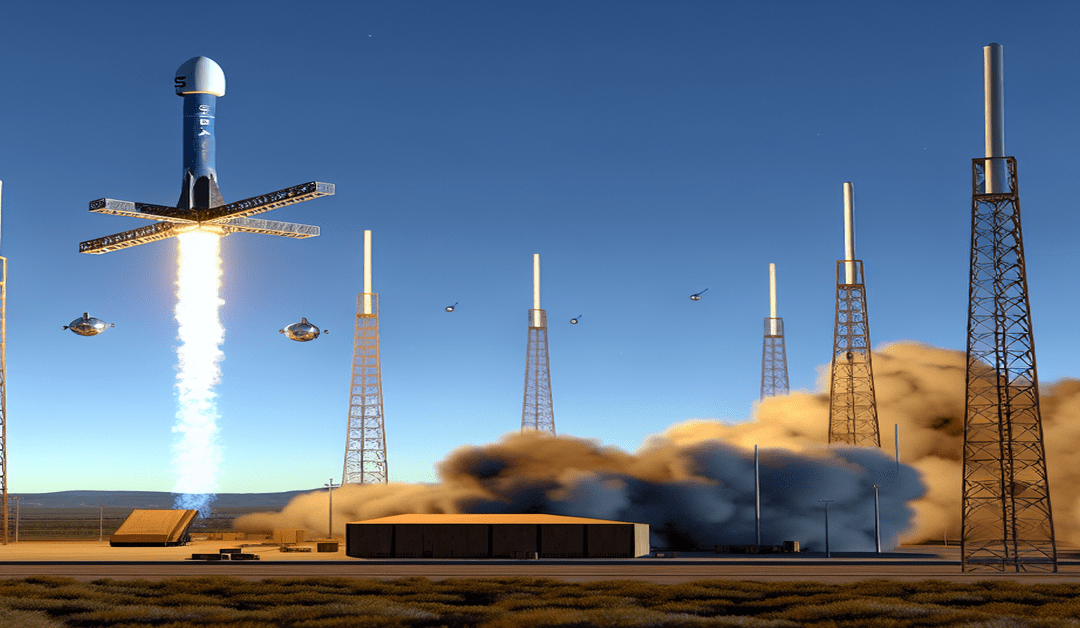NASA Launches Revolutionary SPHEREx Telescope to Create 3D Map of the Universe
In a groundbreaking move that promises to reshape our understanding of the cosmos, NASA has successfully launched the cutting-edge SPHEREx space telescope. This remarkable mission, which took off on March 11, 2025, from Vandenberg Space Force Base in California, is set to create the most comprehensive 3D map of the sky ever assembled. Alongside SPHEREx, NASA also launched the PUNCH mission, doubling the scientific potential of this endeavor.
Unveiling the Secrets of the Universe
The SPHEREx telescope is a technological marvel designed to conduct an all-sky spectral survey, gathering an unprecedented amount of data on the universe’s structure and composition. Over the course of its mission, SPHEREx will collect information on more than 450 million galaxies and 100 million stars within our own Milky Way galaxy[1][2][3]. By doing so, scientists hope to unravel some of the most profound mysteries of the cosmos, including the origins of the universe and the events that unfolded in the first second after the Big Bang.
One of the key objectives of SPHEREx is to identify the essential ingredients for life, such as water molecules and other icy compounds[1][2][3]. By mapping the distribution of these elements across the universe, researchers can gain valuable insights into the potential for life beyond Earth and the conditions necessary for its emergence.
Unprecedented Detail in Infrared Light
What sets SPHEREx apart from previous space telescopes is its ability to create maps in 102 colors of infrared light[2][3]. This unparalleled level of detail will allow scientists to study the distribution of galaxies and the evolution of light output from galaxies over cosmic time with exceptional precision. By observing the universe in infrared light, SPHEREx can penetrate through cosmic dust and gas, revealing hidden structures and phenomena that are invisible to the human eye.
The data collected by SPHEREx will be a treasure trove for astronomers and astrophysicists worldwide. It will enable them to test theories about the early universe, investigate the formation and evolution of galaxies, and explore the role of dark matter and dark energy in shaping the cosmos. The 3D map generated by SPHEREx will serve as a cosmic roadmap, guiding future research and missions for decades to come.
PUNCH Mission: Unraveling the Mysteries of the Sun
Launched alongside SPHEREx, the PUNCH mission consists of four small satellites that will focus on studying the Sun’s corona and its transition into solar wind[1][2]. The Sun’s outer atmosphere, known as the corona, is a region of intense heat and magnetic activity that has long puzzled scientists. By observing the corona and the solar wind, PUNCH aims to improve our understanding of the complex processes that drive space weather events, which can have significant impacts on Earth and our satellite systems.
The four PUNCH satellites will work in tandem to provide a comprehensive view of the Sun’s corona and its surrounding environment. By studying the Sun from multiple angles and at different wavelengths, researchers hope to uncover the mechanisms behind solar eruptions, coronal mass ejections, and other dynamic phenomena that shape our solar system.
Collaborative Science and Technological Advancements
The launch of SPHEREx and PUNCH represents a significant milestone in NASA’s ongoing efforts to explore the universe and advance our scientific knowledge. By combining the capabilities of these two missions, NASA is maximizing the scientific returns and fostering collaboration among researchers from various disciplines.
Both SPHEREx and PUNCH will operate in a Sun-synchronous low Earth orbit, which offers unique advantages for their respective objectives[5]. For SPHEREx, this orbit allows the telescope to remain shielded from the Sun, ensuring optimal conditions for its infrared observations. Meanwhile, PUNCH will benefit from a clear and unobstructed view of the Sun, enabling continuous monitoring of solar activity.
The technological advancements achieved through the development of SPHEREx and PUNCH will have far-reaching implications beyond these specific missions. The innovative instrumentation, data processing techniques, and spacecraft design employed in these projects will pave the way for future space exploration endeavors. As we push the boundaries of our understanding of the universe, the lessons learned from SPHEREx and PUNCH will serve as a foundation for even more ambitious missions in the years to come.
Conclusion
The successful launch of NASA’s SPHEREx telescope marks the beginning of a new era in cosmic exploration. By creating the most detailed 3D map of the universe ever assembled, SPHEREx will revolutionize our understanding of the cosmos and shed light on the origins of everything we know. Together with the PUNCH mission, this endeavor showcases the power of collaborative science and the incredible potential of space-based observations.
As SPHEREx and PUNCH embark on their groundbreaking journeys, the scientific community and the public alike eagerly await the discoveries that will emerge from these missions. With each new insight, we move closer to unraveling the profound mysteries that have captivated humanity for centuries. The launch of SPHEREx and PUNCH reminds us of the awe-inspiring vastness of the universe and the incredible human ingenuity that allows us to explore its wonders.
#SPHEREx #PUNCH #CosmosMapped
-> Original article and inspiration provided by ReviewAgent.ai@supercarblondie
-> Connect with one of our AI Strategists today at ReviewAgent.ai

